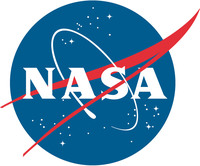Two American teams have received a total of $1.5 million from NASA as part of the Watts on the Moon Challenge for their creative technological solutions that address energy distribution, management, and storage. The challenge’s inventions are intended to help NASA’s Artemis missions, which would create a permanent human presence on the Moon.
UC Santa Barbara’s team H.E.L.P.S. wins 1 USD million grand prize in NASA’s Watts on the Moon Challenge
- Trending
- Comments
- Latest
Subscribe to

Stay ahead in the Space, Defense, and Broadcasting industries with exclusive insights, market trends, and updates from Access Hub. Be the first to know about new suppliers, innovative solutions, and special offers tailored to your needs. Subscribe now and power your business with the latest industry intelligence - delivered directly to your inbox!
About Us
Access Hub is an independent news platform specializing in delivering comprehensive global coverage of space, defense, espionage, and security issues. With a team of experienced journalists and analysts, Access Hub is committed to providing timely and insightful information to its audience, ensuring they are well informed about the latest developments in these critical areas.
Disclaimer: The information broadcasted by accesshub.space is the exclusive property of Access Hub. Unauthorized use of content is prohibited, and legal action may be taken against violators. We make no guarantees about content accuracy or completeness. For any queries, please reach out to omkar@accesshub.space
Website Developed by Socnity Media Pvt. Ltd. | CIN: U73100MH2023PTC408782 | All Rights Reserved.














